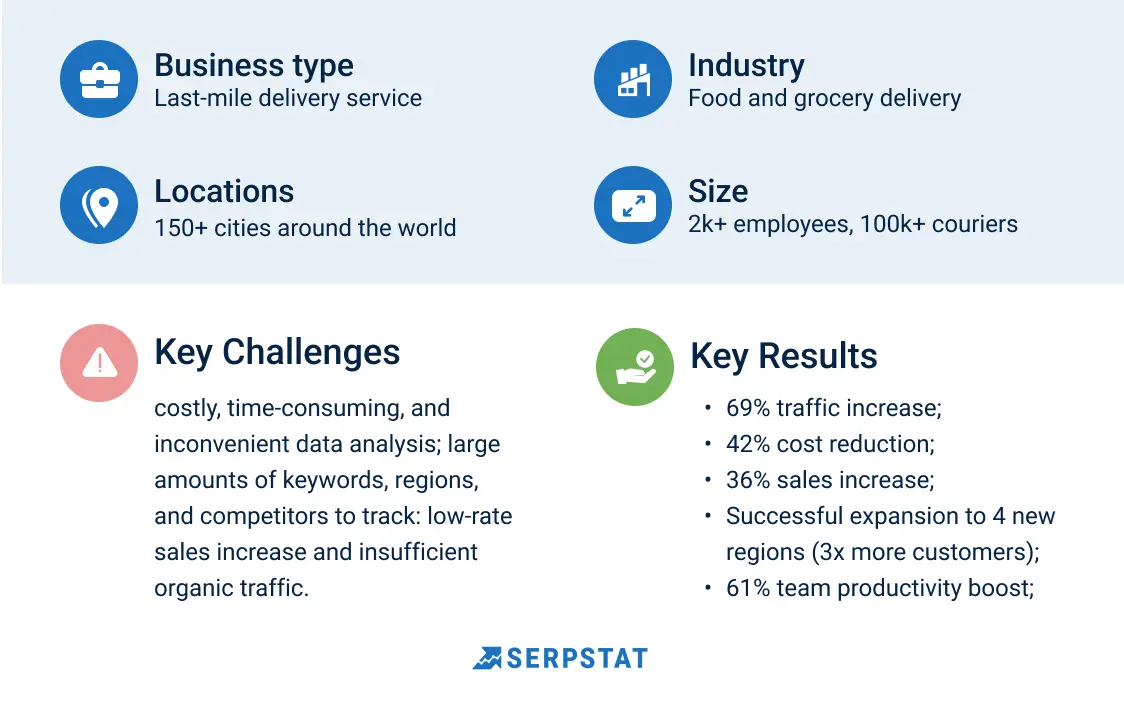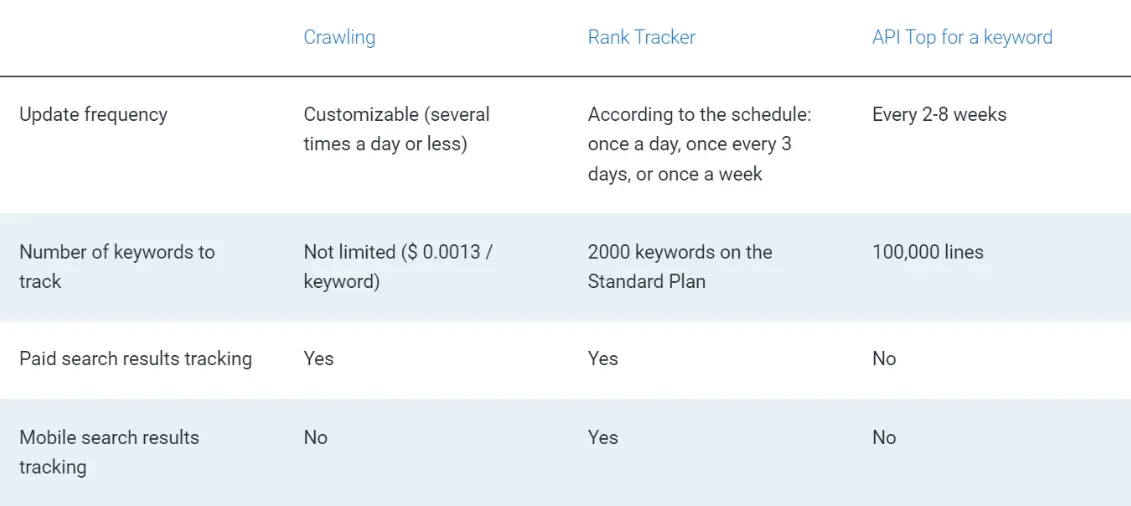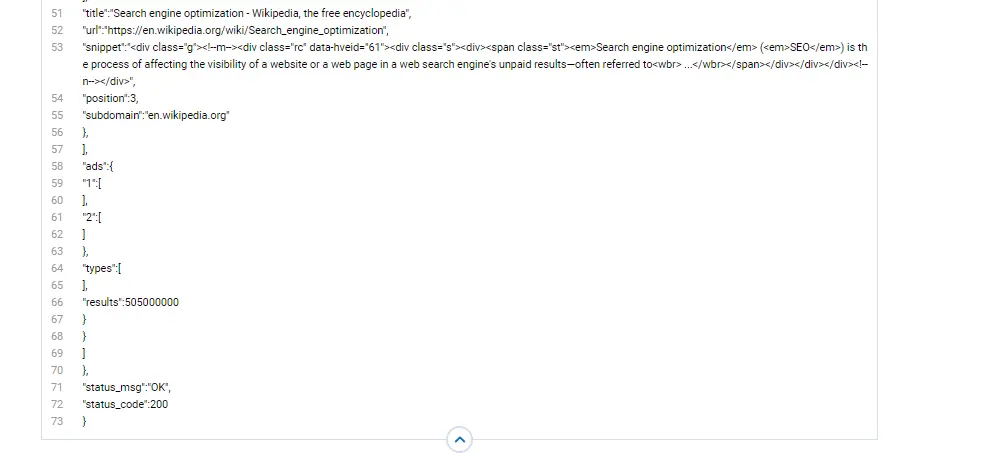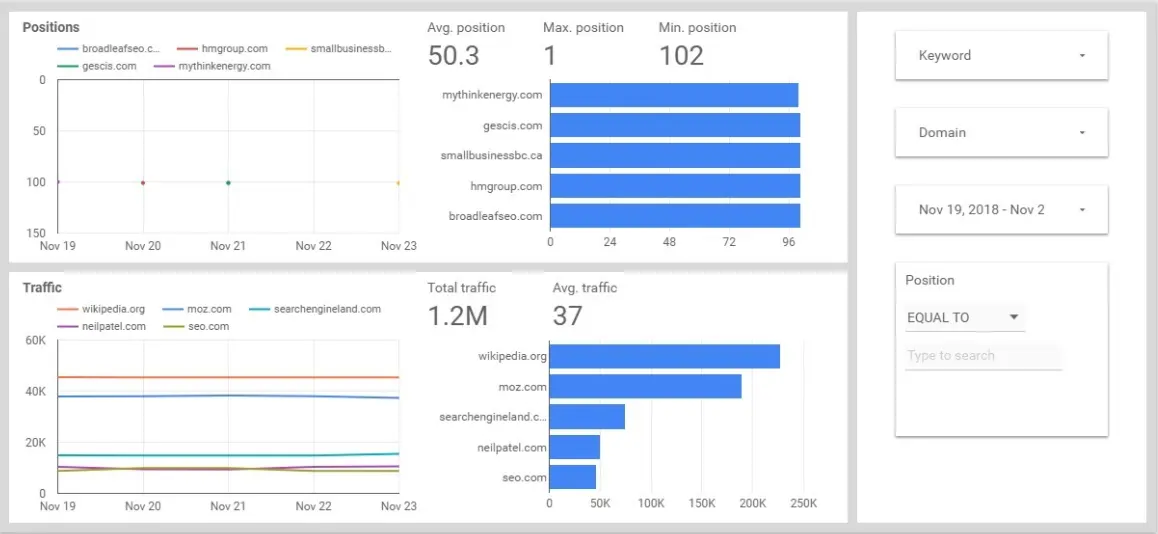
Blog Editor at Serpstat
About the client
Today, we would like to share the experience of our dearest client — one of the world’s leading last-mile delivery companies, which has revolutionized the way people think about food delivery services.

Disclaimer: While we are unable to reveal the name of the brand or any sensitive data due to the NDA, we believe that their success story is an excellent example of how any large business can improve its website performance and stay ahead of the competition
Our client’s ultimate goal is to expand its reach to new regions to provide more people with access to the delivery services they need. They understand that in order to succeed, it’s essential to have a deep understanding of the demand for their services in different regions and adapt their marketing activities accordingly.
With a company of this magnitude, analyzing data can often pose a significant challenge due to the huge amount of data, as well as the high costs and inflexibility of traditional solutions.
In this case study, we will delve into how we successfully helped our client navigate this complex landscape and make data-driven decisions to improve their marketing campaigns and achieve greater success in their target regions while also reducing costs. In a similar way, we could help you too, if you let us! 🙂
Goals
When reaching out to Serpstat, this quick-commerce company had the following goals on its agenda:
- Track SERP positions for millions of target keywords in hundreds of different locations (from capitals to small towns all around the world), including data on featured snippets;
- Conduct comprehensive competitor analysis in organic search: monitor competitors’ rankings and traffic share in specific regions;
- Carry out a thorough examination of regions to determine the competitive landscape and the level of demand for last-mile delivery services, as well as decide which regions to prioritize for their marketing campaigns and which new locations are the most promising to expand to;
- Get an overview of the competitors’ advertising activities in the region: average CPC (Cost-Per-Click) for target keywords and the general level of competition.
- Find a fully customizable and cost-effective solution for gathering and analyzing large amounts of data.
Challenges
The majority of comprehensive SEO platforms do offer the data listed above — including Serpstat’s Rank Tracker or API, as well as the existing alternatives on the market.
However, since our client needed to keep track of such a vast number of keywords, locations, and competitors at once, using traditional methods ended up being prohibitively expensive and inconvenient, and that was the main challenge the company faced.
Conducting such an extensive analysis via any rank tracking tool’s interface is next to impossible for a large corporation due to the following reasons:
- There are limitations on the number of keywords or competitor websites the user can add.
- The necessary number of keywords and competitor websites the company needs far exceeds the number of credits available on any standard subscription plans of any SEO platform. As a result, constantly purchasing additional credits would make this research way too expensive in the long run.
- Managing such large volumes of data through a third-party interface is inherently inconvenient and time-consuming. While it’s an excellent solution for small to medium-scale businesses, it’s not always suitable for larger ones.
While the Serpstat Rank Tracker is one of the more flexible options on the market since it allows adding an unlimited number of competitors to the project for free, the limitation of 50,000 keywords per project might still not cut it for a massive business.
The next best thing is the Serpstat API, as it tends to offer much more flexibility for a larger business. Here are some of the pros of the Serpstat API as opposed to the standard tools:
- It allows a business to gather much more data;
- The data is raw, meaning that the client can fully customize it — implement it into any custom dashboard or software, sort and organize it in any convenient way, and extract only those pieces of information that are needed for a certain task.
- It tends to be cheaper than via an interface.
With that being said, while the Serpstat API is one of the most convenient and cost-effective solutions out there, we came up with an even better way for the client to reach their goals — the Serpstat SERP Crawling Service and Serpstat Search Volume Crawling Service. Even though we can’t disclose any sensitive information, our client’s calculations indicate that using these services for data gathering ended up being at least 2x cheaper than all the alternative solutions.

Why Serpstat SERP Crawling and Search Volume Crawling Services?
Here’s why the Serpstat SERP Crawling and Search Volume Crawling Services ended up being a perfect solution for our food delivery client:
- It offered the most comprehensive data out of all the options (Serpstat Rank Tracker or Serpstat API) yet kept the cost even lower than the standard API. They were able to reduce the costs by 2 times compared to doing it in-house or via alternative solutions, while getting the data on millions of relevant keywords in organic and paid search results for both their own and competitor’s websites in several hundreds of regions, including comprehensive data on featured snippets.
- Flexibility. They were able to set up a convenient schedule to update the statistics on any number of keywords in any region(s). Typically, most SEO platforms have limitations on how often the users can refresh data. And anything that’s beyond the standard rates usually comes with hefty extra charges.
- Customization. Our delivery service client really appreciated the ability to get the data in a raw JSON format, which allowed them to organize, analyze and visualize the data on their own platform without having to rely on any third-party services. Here’s an example of such a report:

Learn more about crawling methods:
With this report and a bit of time, anyone can organize and visualize the data in any convenient way. For instance, here’s what a Looker Studio report on traffic and ranking distribution may look like:

How Exactly Our Client Used The Serpstat SERP Crawling Service to Scale Their Delivery Business
Via the SERP Crawling, our client was able to obtain the necessary insights from Keyword Research, Competitor Analysis, Backlink Analysis, and Rank Tracker much more efficiently and cost-effectively.
First, our client needed to gather all the data for further work, and here’s how it went:
1.The company gathered a complete list of keywords relevant to their business.
2.Next, they signed up for Serpstat’s Search Volume Crawling service to update their keyword list with data on search volume, CPC, and competition level.
3.Then, they submitted the same list of keywords for Serpstat’s SERP Crawling Service to gather data on domains’ positions in search results for given keywords, as well as on featured snippets.
At this point, they have obtained all the raw data they needed. Now, let’s examine how they leveraged this information:
1.Calculation of organic traffic share and SERP visibility for a list of target keywords.
Step 1: With the data obtained from SERP and Search Volume Crawling, the client identified priority keywords, which had a high enough search volume, as well as gathered the list of domains that ranked for 1-10 positions for each keyword.
Step 2: For each keyword, they estimated the traffic by taking into account the search volume and CTR (Click-Through-Rate). They checked the domain that ranked at the first position for each keyword and estimated the traffic by multiplying the search volume of the keyword with the CTR of the first organic position. They repeated this process for all the keywords in their list and ended up with the total estimated traffic each domain drives.
Step 3: As they knew each website’s estimated traffic, they summarized it to get the total traffic for their whole set of keywords. They then calculated the percentage of total estimated traffic for each domain and learned the organic traffic shares.
Read more:
2.Evaluation of paid (PPC) traffic for a set of relevant keywords.
Step 1: They checked the domains that rank in the Ads Position for each keyword and estimated the paid traffic by multiplying the search volume of the keyword by the CTR of the ads positions. They repeated this process for all the keywords in their list and received the total estimated traffic from PPC ads for each domain.
Step 2: The client estimated the costs spent on ads for each domain by multiplying the estimated number of visitors from ads by the CPC (Cost-Per-Click). They then summarized it to get the total budget spent for their set of keywords and calculated the percentage of the total budget spent for each domain.
3.Cannibalizing Competitor’s Organic Traffic using Google Ads.
Step 1: Our delivery service client identified competitors that are performing well in organic search results and gathered all the keywords they rank for on the first page of Google search results.
Step 2: Then, they sorted and prioritized the keywords by the lowest CPC and highest organic position. That way, they discovered the most effective keywords for running Google Ads campaigns with a minimum Google Ads budget. By doing so, they were able to outrank their competitors’ organic results with their ads.
Read more:
4.Prioritizing Google Ads Keywords
Step 1: The client divided their URL results into two groups based on performance: well-performing (first page of search results) and low-performing (second page). Then, they gathered and prioritized keywords for both groups (highest volume, lowest competition).
Step 2: They prioritized keywords with the lowest CPC from the second group and ran Google Ads. This approach also helped them to improve organic rankings. Once the page drove paid traffic, it improved user behavior, which is a strong ranking signal for organic search. It’s been an excellent additional bonus at a minor PPC cost.
Step 3: The client reviewed the keywords they were already bidding on and ensured the budget was being spent efficiently by prioritizing those that were performing well in organic search and had the lowest CPC.
5.Comprehensive analysis of featured snippets for target keywords.
Step 1: With the data gathered for Serpstat SERP Crawling and Search Volume Crawling Service, the client had the information on the keywords and domains that rank for featured snippets. Similarly to previous cases, the client calculated the traffic and percentage of traffic share via CTR.
Step 2: The client analyzed the results to determine which domains are most successful in ranking for featured snippets for their target keywords. Consequently, they were able to analyze the factors that allowed the competitors to rank for featured snippets and use this information to outrank them by providing higher-quality, better-optimized content.
What Results Did Our Client Achieve?
- Via thorough keyword research and competitor analysis and further website content optimization, the company managed to improve its website rankings in search results and rank for featured snippets. In turn, it increased the website’s overall organic traffic by 69%.
- By analyzing the competitive landscape and demand for last-mile delivery services, the company was empowered to pinpoint the most promising regions, targeted their marketing activities towards them, and consequently, established a strong presence in 4 new locations.
- Gathering data via Serpstat SERP and Search Volume Crawling service allowed our client to reduce the cost of research by 42%, as opposed to conducting it in-house or through alternative solutions.
- By leveraging the obtained SEO and PPC data, our client outranked the competitors in local search results (organic and paid) at a reduced cost.
- By dominating organic and paid search results for their target keywords and regions, our client company succeeded in expanding its customer base by 3 times in four new locations.
- After the initial data collection and organization, the company was able to reduce the time spent on research and analysis to 10 hours a week, whereas previously, it took up to 25-40 hours a week.
- The overall marketing team productivity was boosted by 61%.
All of these steps combined helped our client to increase sales by 36%.
Conclusion
In this case study, we highlighted the experience of a major food delivery company that turned to Serpstat for help in expanding its business in new and existing regions. With millions of target keywords and hundreds of locations to track, as well as the need to analyze the competition and advertising activities, the company faced the challenge of gathering and analyzing a huge amount of data in a cost-effective and efficient way.
We recommended Serpstat SERP Crawling Service and Search Volume Crawling Service as the most suitable solution, and they exceeded their expectations by being the most inexpensive, flexible, and customizable solutions on the market and allowing them to increase their organic traffic, outrank competitors, expand their reach to 4 new locations, reduce time and costs on analytics, and, most importantly, win more clients and sales!
The data from Serpstat SERP Crawling and Search Volume Crawling services can be tailored to fit the specific needs and goals of any company, making it an incredibly versatile tool for enhancing operations and driving growth.
Found an error? Select it and press Ctrl + Enter to tell us
Discover More SEO Tools
Batch Analysis of Competitors’ Domains
DA Domain Checker – get valuable information about the competitors’ domains
Don’t you have time to follow the news? No worries! Our editor will choose articles that will definitely help you with your work. Join our cozy community 🙂
By clicking the button, you agree to our privacy policy.
